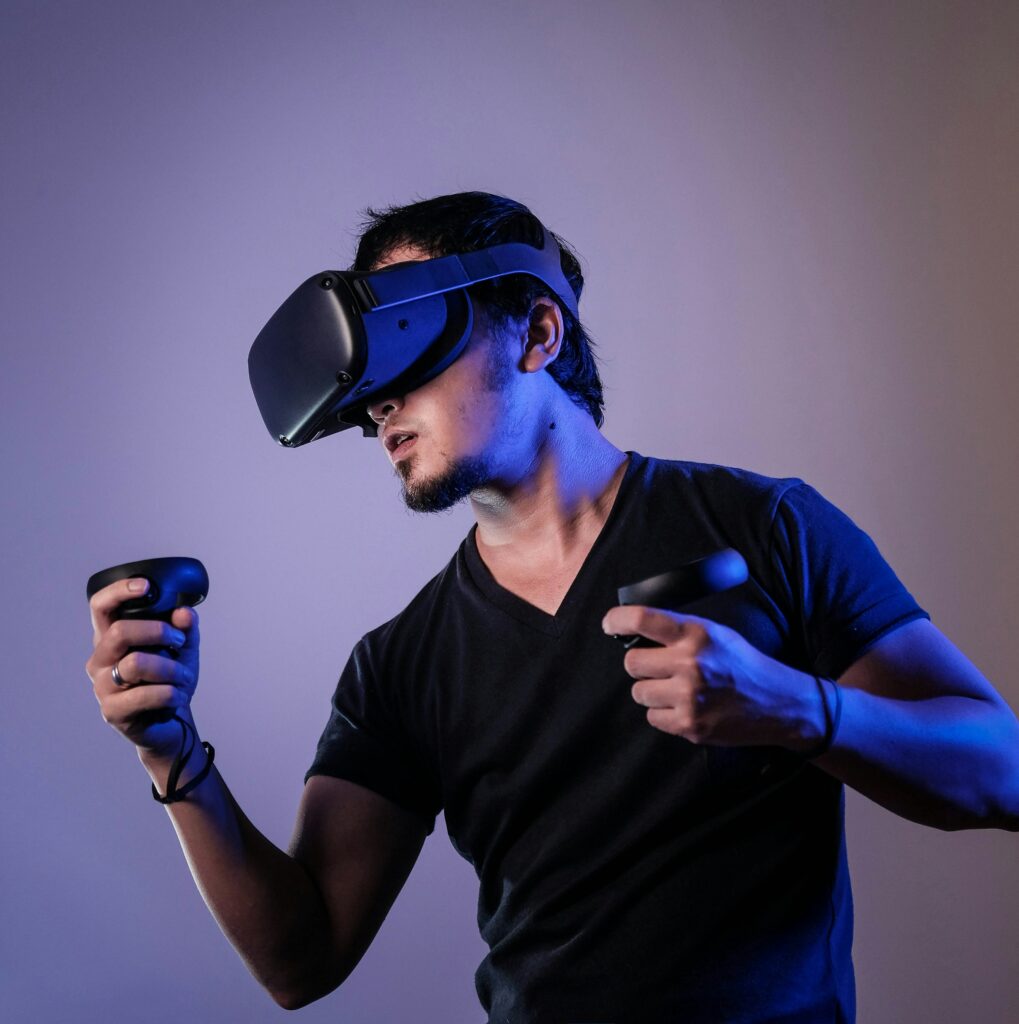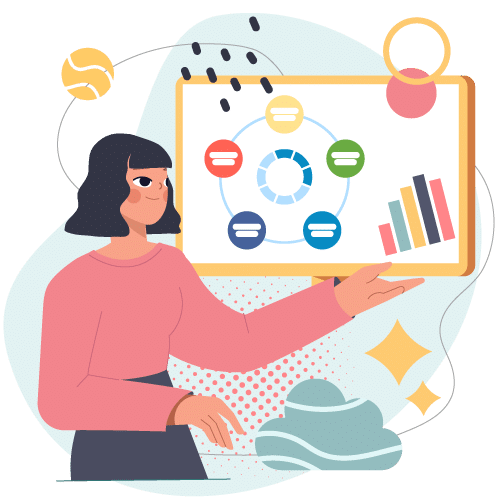Response To Blog Post 4
Response to Hannah:
I agree with Hannahs definition of open pedagogy. I appreciate how she highlighted the how open pedagogy promotes inclusivity! I also think I personally can bring into my own educational practices as material in group projects are shared amounts our group. I think that engaging in course work creatively is very important for the outcome of knowledge. It allows for a more diverse and accessible learning strategy that strives to encourage engagement and creativity! Very well explained Hannah!
Response to Larissa:
I liked Larissas explanation of of the impact of OER! I liked her dive into the benefits of cost efficiency, flexibility, and accessibility! To add to this, I feel OER also due to its easy accessibility it can be accessed faster. This makes for learning to become not only cost effective, accessible, and flexible but also more efficient! OER is a great advantage point in an educational environment and should be used more!
Response to Liz:
I liked liz’s comparison of OER and open pedagogy to different forms of learning. I liked her explanation of the empowerment for both parties on how students work closer with content and how teachers help students independently navigate resources. There are many immense benefits to OER and Open pedagogy, some include better inclusivity, easy access, and helping to shrink the digital divide! Get work explaining!
Blog Post 5
Predictive Technologies and AI in Education:
Predictive technologies and AI are being used to personalize learning, enhancing student support, and improving efficiency. AI grading software has been used for many of my multiple choice exams improving the feedback I get from an exam very soon after taking it. Aswell as the platform Chat GBT, personally I use this software to make personalized practice quizzes to test myself on course notes. Both these examples allow me to learn from testing my knowledge and give almost instant feedback. This allows for an efficient learning experience.
Benefits of AI in Education:
AI in education allows for numerous benefits, this includes personalized learning and creating an adaptive learning environment. AI can help tailor educational experiences to each students unique needs; this allows for a more accessible learning outcome. AI can help educators to be more efficient with tasks such as grading and insight into students work. This allows for educators to spend more of their time on more important tasks. These AI tools allow for education to be more efficient, accessible, and responsive to each students needs.
Challenges of AI in Education:
There are many challenges that comes from the use of AI in education. This includes the cost of technology, lack of teacher training, privacy and security. There can be a digital divide between students who can afford and have access too technology to use AI, thus making it a non accessible resource. Additionally, educators need training to effectively learn how to use AI software. Lastly, data and privacy is a concern when a large portion of students information is stored online. To address these concerns educational spaces can seek open AI resources for students, offer teachers workshops for AI software training, and implement proper security measures for privacy.
Ethical Considerations of AI in Education:
The use of AI in education raises concern for privacy, transparency, and bias. AI software collects a large amount of students information making it an essential practice to maintain secure storage of this information. Transparency is understanding how AI makes decisions is crucial to make sure they are unbiased and fair. Promoting awareness about these concerns with help ensure AI is used properly in an educational space.

Photo by Minh Pham on Unsplash
Future Directions in EdTech:
Emerging technology include virtual reality and augmented reality are preposed to become part of routine education. Virtual reality and augmented reality can be preposed to create a more immersive, hands on learning experience. This can make subjects be more engaging and accessible as they can be transformed into a creative learning experience. These technology combined with AI will create a personalized, interactive, and diverse education in the future.
Attached is a video offering practical solutions to regulate our AI-filled future!
Blog Post 4
What is Open Pedagogy?
Prioritizing sharing, collaboration, and using open resources is the process of Open Pedagogy. Allowing students to co-create their knowledge rather than just consume the material. Open Pedagogy can empower both students and educators to add creative input into the course material and make it more engaging. This allows for the course to be barrierless and it can be helpful for unique learners.
Consume The Role and Impact of OER:
Open educational resources (OER) are usable, sharable, and adaptable materials that are readily available for anyone to use. OER can transform an educational landscape due to its customization and adaptability. This can allow educators to modify OER to specifically fit their teaching content. This adaptability allows for more engaging content for learners and promotes diverse learning. OER allows for a cost reduction within the learning environment; this allows for low-income students to be able to engage in the material. Below is a video explaining the benefits of OER and how it improves students’ success rates.
Global Trends in OER:
The global trend in OER that I find most impactful is the focus on inclusivity. This is the use of creating resources that are culturally relevant and address the unique needs of worldwide learners. Different countries and institutions adopting OER in ways such as government initiatives that promote funding. However, challenges include digital divides, uneven provincial support and training funding.
Understanding Creative Commons Licensing:
The importance of Creative Commons licensing for OER is that it clarifies the usage and rights; as well as promotes collaboration. This enhances accessibility to quality content for educational material. Understanding these licenses helps you understand the legality of the use of your educational resources, and to ensure proper references and credit is given. This information promotes responsible sharing and protects the rights of creators. A way I might use creative common licenses in my work would be to choose a license that allows others to use and adapt my work. As well as when I use online material for reference, I use the appropriate licensing to give the creator proper credit.

Attributes of Open Pedagogy:
Within my educational practice, open pedagogy can be represented by actively participating in collaborative projects, sharing resources with peers, and giving insightful feedback. Within the context of transparency, I can help share material and media with others. Reaching out to others about shared thoughts and actions within the learning environment encourages an inclusive learning atmosphere. Using student-centered learning I can actively involve myself in the learning process and share my knowledge to contribute. This contributes to more inclusive and participatory learning as it encourages all students to work together, contributing to the growth of each student’s learning.
Blog Post 3
What is Universal Design for Learning (UDL)?
Universal Design for Learning (UDL) is the use of a flexible and accessible education approach; allowing students to learn no matter what their preferred mode of teaching. The main principles of UDL are the multiple means of engagement, representation, action, and expression. UDL creates a more inclusive learning environment as it offers many ways for content to be learned. It also demonstrates a different way to present knowledge and unique ways to engage students. In a physical classroom, UDL can be applied by using different techniques for presenting projects. In high school, I had many classes where there were multiple different forms, and we could present learning outcomes. These would be by filming short videos, having short plays, writing papers, or having a slide show. These multiple forms of presenting were all linked to the same project but allowed for different creative outcomes. In an online classroom, UDL can be applied by using different online tools to submit work online. When I submit work online, I prefer to use my iPad and Apple pencil to write up my work. Other students can type or take pictures of their work and drop it into a file to be submitted. I like to use fun colours and drawings to engage myself in my work when writing on my iPad. I feel these multiple ways to submit work help each student to succeed in their unique way.

Ensuring Accessibility in Online Settings:
The success of accessible learning online is the allowing for all students can participate in the learning environment. Some elements that need to be in place to encourage accessibility are using user-friendly designs, accommodation to everyone’s unique needs, trail runs for content, and using accessible content. A specific way to encourage accessibility is to ask. Asking students and reaching out personally to specific students who may present with more needs. This allows for a conversation on how you can help a student with their input. Using polls or anonymous surveys is also beneficial to reach bigger groups without pressure. A personal way accessibility has played a role in my learning is by using polls and surveys to add input to Tas and the professor’s teachings. I have had the opportunity to partake in many forms of review after and during educational spaces. This allows for feedback on what students liked or didn’t like when learning in those specific classes.
Ethical Challenges of EdTech:
One potential ethical challenge of EdTech is the lack of universal digital tools. Some people don’t have access to proper online resources due to cost or limited due to internet connection. Some other challenges can be the added risk of breaching students’ privacy. As everything online is stored it could be shared unintentionally to anybody, this breaks privacy and can lead to unwanted information being spread. Educators can learn to store only what is necessary online and to keep all security to the highest quality. As well as promoting free platforms whenever possible and finding extra resources for students such as borrowing laptops or using library resources.
Ethical Considerations in Digital Interactions:
Some ethical considerations that arise in digital interactions are respect and privacy. It’s easy to feel safe being rude or unkind online as you can hide behind a screen. This brings importance to the necessary need to be kind and respectful online just as if you were face-to-face. Just because you are behind a screen doesn’t mean you can breach people’s trust and share unwanted information. Respecting people’s privacy is another key importance to digital interactions. Another important idea is to be aware of your digital footprint. As everything online can stay there and be reached by anyone it’s important to be cautious of your posts and interactions online. In this short video, students explain the importance of a digital footprint online.
Lastly, keeping academic integrity online is crucial. This means avoiding plagiarism and cheating as online resources make it easier to do so. It’s important to be honest about your work.
Applying UDL and Accessibility Principles:
In grade school, I had many opportunities to participate in all modes of learning no matter online or in person. I can remember teachers bringing in computer carts for when we needed to type up our work. This allows for students who may have not had internet or technology at home to participate in these projects. As well as teachers allowed for many forms of presenting to be performed for various projects. This allows students to express themselves in their preferred form to better engage themselves in learning. This was demonstrated by allowing students to write papers, make short films, write songs, or even present slide shows on their desired topic. This demonstrated UDL as it creates many different modes of learning for each unique student. The only improvement would be to allow this type of presentation for more projects. Some teachers were only lenient for one or two projects out of the year rather than the majority.
Responses To Blog Post 2
Response to Emma:
I liked Emma’s in-depth explanation about exploring digital spaces. I agree with her on the accessibility and flexibility that online classes offer. I like online classes for this exact reason, allowing for a less stressful semester with added workability. Along with these benefits online classes also offer a wider range of students from different backgrounds to be able to access it. I liked Emma’s touch on the feeling of isolation and lack of connection that comes with online learning. With this feeling, it may be harder to contribute to an online space. A possible solution to this problem would be texting, calling, emailing, or even meeting up with classmates or teachers. This would benefit learning and the mental aspect of learning in a digital space.
Response to Marina:
I liked Marina’s adaptation of pedagogy and its tie into drama. I enjoyed her connection to art and its way of engaging students to learn creatively. Throughout grade school, I took many forms of creative classes from dance, art, drama, to ceramics. These classes were my favourite as they kept me engaged and constantly learning. I agree that collaboration creates a positive learning process. I think that working with others helps inspire different forms of learning. When you work along with other students it allows for different points of view on one subject. This also allows for people to feel connected and boosts the mental aspect of learning.
Blog Post 2
- What Does Pedagogy Mean to You:
Teachers using different methods and practices to teach is called pedagogy. Personally, I see our future learning to gradually become more and more online. With technology constantly advancing, resources will be able to be used more for teaching and education. My favorite influence of pedagogy in my educational career would be when teachers have been interactive with their students. I have felt that when teachers are constantly engaging with the students and asking or answering questions; information sticks better with me.
- Networked Pedagogy in Action:
Network pedagogy can be beneficial because it allows for a greater diversity to those you interact with. It allows you to connect and share with others from any distance. I have had very positive experiences in the past connecting with fellow students online. I have been able to make connections and communicate with others for study help. Technology helps allow for these connections to be fulfilled with the use of social media.
- Learning Theories in Practice:
- Social Learning theory:
Social learning theory is the role of social interactions and observations when learning. Within an online setting social learning is very abundent. This is due to the ability to post and share multimedia. This allows for sharing examples of behavior to others. I can see this practice shaping my learning in a positive way. I tend to watch many YouTube videos when studying, this allows for me to watch and mimic others’ behaviors to teach myself difficult material.

- The Role of the Instructor:
With online education, being an online instructor comes with many responsibilities. This is due to not only just being able to teach students, but also having to give outlets for connections, sharing, and collaboration using online tools. These instructors also must be very well educated with online materials to be able to teach them properly. I have taken many online courses at UVic, during this time I have always had a positive experience. This was demonstrated by educators being well versed with all online tools needed to be able to use for the course. This is beneficial as when students had questions about anything to do with the course instructors were able to give clear and efficient instructions.
- Exploring Digital Spaces:
Digital spaces are the locations where interactions and learning happen. Some benefits are that they allow for many students with different backgrounds to connect and collaborate. A challenge would be if these are new outlets that you have not used before it can be confusing and hard to navigate. A way you can be a good influence in these spaces is to always be respectful and positive. You can become well versed in the use of these platforms to ensure you can use them seamlessly. As well as being kind to others and showing them respect online.
Responses to Blog Post 1
Hannah’s Post:
This is a response to Hannahs blog post 1
I enjoyed Hannah’s reflection on the different modes of learning. As a person who prefers a hybrid method of learning I can appreciate the commentary on her reasoning for face to face learning. I agree that face to face learning comes with a greater responsibility and accountability with personal academics. I also agree that face to face learning allows you to focus better with less personal distractions.
I liked Hannahs digital identity breakdown on the importance of a well kept online presence. I agree that managing your online presence is important for your academic and professional career. Being conscious about how others view you can be very impactful for future endeavors.
Larissa’s Post:
This is a response to Larissas blog post 1
I liked Larissa’s in depth definition on exploring open and distributed learning. I liked her elaboration on distributed learning and its encouragement for accessibility; allowing students too work form anywhere at anytime. Larissa’s reflection on open education and its opportunity’s for making resources more accessible is very insightful. Open education is very important to allow students from all backgrounds to be able to get the education they deserve.
I liked Larissa’s commentary on managing your digital literacy. I thought her reflection on how easy it is for future employers to be able to see your personal media. This is important because you need to be aware of how you present yourself online.
Liz’s Post:
This is a response to Liz’s blog post 1
I appreciated Liz’s reflection on asynchronous learning. I personally live at home, about an hour and a half commute to Uvic every day by bus. I also work a few times a week to help support myself and my education. I liked her commentary on the use of asynchronous education as a benefit for student who have difficulty staying on track with other responsibilities. As someone who needs to work and commute everyday this mode of learning is very beneficial towards my education. It allows for more flexibility and forgiveness when schedules get busy. Personally I prefer a hybrid method of learning to help me stay accountable for my work and to stay focused. This being said having some classes be asynchronous allows for a greater flexibility and accessibility for those who have other responsibilities other than school.
About Me & Blog Post 1

My name is Dana Blaylock, and I am entering my third year at UVIC majoring in biology. I have always loved spending my time outdoors and that has solidified my interest in biology and ultimately my pursuit of this degree. My favourite class I have taken at UVIC is my second-year ecology class, in which we studied the relationship between animals and their habitats.
- What is Open Distributed:
Distributed education is where learning modes can be reached from various locations; often done using technology. This is different than the face-to-face traditional learning. This is beneficial for students who cannot physically be present within a classroom due to location, disabilities, or work. This allows for flexibility when it comes to accessible learning; allowing everybody to get an education no matter their situation.
- What is Open Education:
Learning materials that are free of cost such as textbooks, courses, and materials are referred to as open education. This is beneficial as it allows for more accessible resources to people in difficult situations. It can allow students who have funding barriers to receive a valuable education.
- Modes of Learning:
Different modes of learning could be online, face-to-face, blended, and hybrid. My favourite mode of learning would have to be a blended learning. I prefer to engage with people in person and be able to build connections and bounce back ideas of current assignments and topics. I also appreciate being able to submit assignments online or even take exams from the comfort of my own home. A blended mode of learning allows me to achieve my goals efficiently and adequately.
- Digital Literacy:
Having the knowledge and skill to properly use online tools and technologies for education is referred to as digital literacy. Digital literacy is important for open and distributed learning as many platforms for these types of education are online. These online resources are limited based on how well you can thrive within the online world. I have had to build my digital literacy as all my assignments are submitted online. I have had to use coding software and various simulation software for many university courses. If I had not had digital literacy I would have done poorly on those assignments, and it would impact my overall grade for that course.
- Digital Identity:
Your online image and presence are represented by your digital identity. This includes your posts, pictures, and any digital content created under your name. I post often on social media as a source of expression in photography and daily activities. I am very aware that what is posted online stays online and I use my platforms carefully. I avoid sharing personal and valuable information, as well as information that future jobs would frown upon. My digital identity plays a very positive role in my professional and educational life as I can use it to connect and share with classmates or coworkers.
